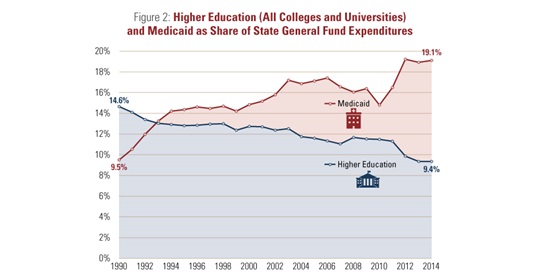January 4, 2017; New York Times and National Public Radio
According to a 2007 study by the National Institute of Justice, one in five female college students (and one in 16 male college students) are sexually assaulted and more than 90 percent do not report the crime. One of the reasons students do not report is fear of retaliation, particularly when the accuser is one of their professors. If the student reports the crime to the college’s Title IX office instead of the criminal justice system, they can remain anonymous—but that can often lead to other problems.
Two University of Kentucky entomology graduate students were separately assaulted by one of their professors. They feared retribution and explored opportunities to report the crime while maintaining their anonymity. One of the students explained their decision:
I just spent a good portion of my life in grad school trying to further my career and if I’m labeled as someone who filed a sexual assault claim against a professor, that could very easily backfire against me. There’s a lot of people in academia who think that there are women who make up stuff like this.
They filed a report in the university’s Title IX office. Title IX is a federal law prohibiting gender discrimination on college and university campuses. Schools failing to follow Title IX risk losing federal funding. Once a report is filed, the office is required to investigate. During the investigation, the accused and accuser remain anonymous. Unfortunately, the investigation and subsequent hearings are fraught with challenges.
One obstacle is that each school’s office has jurisdiction only over its students and personnel. If the accused decides to leave the institution before the hearing is completed, the proceedings end immediately without any reference to the investigation on their record, allowing the accused (assuming he or she were guilty of the offense) to potentially assault additional students at the new school.
Another challenge is how the hearing is decided. Who presides over the hearing varies from school to school and usually doesn’t include officials from the criminal justice system. Title IX mandates the hearing utilize the “preponderance of the evidence” burden of proof. This standard is significantly less than “beyond a reasonable doubt,” which is required in a criminal trial. Nonprofit Quarterly has reported on the controversy surrounding 2011 U.S. Department of Education “guidance” on college sexual assault that has been opposed by some in academia, including one specific letter issued by 28 Harvard Law School professors criticizing the lack of due process in college sexual assault invstigations. Participating in a hearing is often extremely difficult for a survivor of assault because of the stresses that come with proving the activity occurred. By using the lower standard of proof, the hearing puts a limit on any additional pain, trauma, and expense.
In the case of the two University of Kentucky students, the Title IX office scheduled an official hearing after interviewing dozens of people and collecting evidence. But the hearing never occurred because the professor resigned before it could begin. Frustrated, the women reported the assaults to the university’s student newspaper. The media attention led to many additional stories and FOIA requests for the full Title IX report. The students feared their anonymity would be compromised and joined an action by the university to stop the report release. Judge Thomas Clark of the Fayette County Circuit Court plans to issue a ruling in the next two weeks.
Schools that fail to conduct proper hearings can be subject to government complaints and lawsuits. Currently, over 200 institutions are under federal investigation due to complaints connected to sexual violence investigations and proceedings. A better solution might be a society that better supports survivors of sexual assault.—Gayle Nelson
Update: On Tuesday, 1/24/2017 The Judge ruled in favor of the University to prohibit the release of the report to protect the anonymity of the students. The Newspaper states it will appeal the decision. http://www.npr.org/2017/01/25/511554841/judge-sides-with-university-in-legal-fight-with-student-newspaper
Original post: https://nonprofitquarterly.org/2017/01/12/sexual-assault-campus-anonymity-title-ix/



